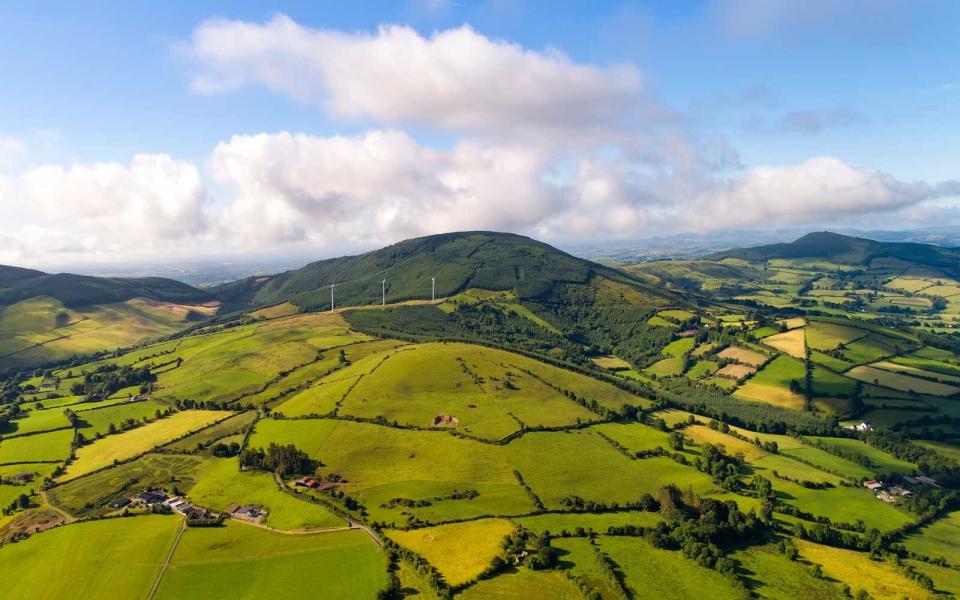These Are the Best and Worst Times to Visit Ireland
Somehow even greener than the pictures promise, Ireland is a land of fairy tales and political revolutions, poetry and pubs, rainbows and, well, quite a bit of rain. Millions of tourists flock to the Emerald Isle each year, seeking its quaint villages, lush green landscapes, stunning coastline, historic castles, and more.
While there is no one "perfect" time to visit Ireland, different seasons offer different experiences. There are quiet and intimate (albeit drizzly) winters; lively springs; sunny but busy summers; and shoulder season autumns that balance better weather with lower crowds.
The best time to visit Ireland is, ultimately, up to you — and the items on your to-do list.
Related: More travel tips

Getty Images
Best Times to Visit Ireland
Best Time to Go to Ireland for Good Weather
Ireland's weather is changeable, but it's not extreme. The temperature rarely falls below freezing in the winter or rises above 70 degrees Fahrenheit during the summer. It's not uncommon to see bright sun and cloudy skies in quick succession, regardless of the time of year.
And let's get this out of the way: It will rain, so be ready for it. Trip timing will affect just how much rain (or sun) you are likely to see. Summer is sunniest, with daylight stretching late into the evening around the solstice. July and August are the brightest months, though they're also the country's busiest. Between November and February, Ireland is dark, cold, and wet — but it can also feel quieter and cozier.
If you want to take in Ireland's natural beauty with a scenic road trip, hike through the countryside, or play on one of the nation's famous golf courses, aim to visit April through September. That way you can take advantage of longer daylight hours and more pleasant weather.
Best Times to Visit Ireland for Festivals and Events
Ireland celebrates a lot more than just St. Patrick's Day (a holiday that, before its more raucous iteration, was a historically religious holiday). On June 16, for example, Dublin's streets swell with James Joyce devotees observing Bloomsday — the anniversary of the historic date during which the writer's groundbreaking novel, "Ulysses," takes place.
In western Ireland, the County Kerry town of Killorglin organizes the Puck Fair — Ireland's oldest festival — every August, where a wild goat is crowned "King Puck" for the duration of the event. September draws legions of oyster lovers to Galway for the Galway International Oyster and Seafood Festival, while summer is busy with events across the countryside.
And you don't have to wait for a festival to enjoy live music in Ireland. Tons of pubs across the country offer live tunes throughout the year, so you can sing along to classic Irish songs and enjoy the festive atmosphere whenever you visit.
Worst Times to Visit Ireland
Summer is Ireland's high season, with a corresponding rise in airfare and accommodation rates. Although it's the most crowded time to be in the country, summer is also when even the smallest B&Bs and rural attractions (closed the rest of the year) are bound to be open. And with the season's long daylight hours, it's easier to get more done in a single day.
St. Patrick's Day follows closely behind the high summer with regard to both crowds and costs. Unless you are determined to spend the holiday in Dublin's Temple Bar district, it's best to avoid traveling to or from the country around March 17.
While winter is the least busy time to visit Ireland, it's also when the weather is at its worst. For a nice compromise between weather and crowds, visit in the shoulder seasons of either spring or fall.
Most Affordable Times to Visit Ireland
Outside of Christmas and St. Patrick's Day, Ireland's drizzly and dark winter is also the cheapest time of year to visit. Some accommodations may offer off-season rates in the winter, but others might be closed until spring.
The summer months, especially July and August, correspond with noticeably higher airfares than the flights available in the shoulder seasons and winter. Hotels can also charge peak rates during the summer.

